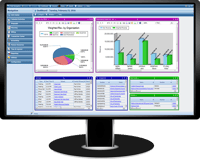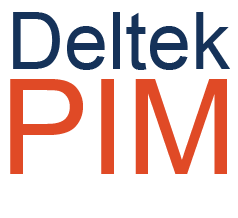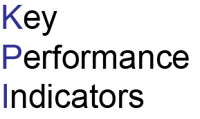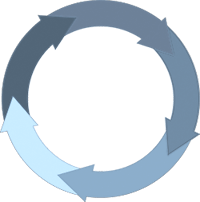Reasons to Have a Project-Based ERP System
 The goal of an Enterprise Resource Planning (ERP) system is to integrate all aspects of a business from finance to CRM to HR. To have and maintain a successful business operation, accurate and timely information must flow between all the different business functions. With an ERP in place, there is visibility into operations which provides greater control over the business. However, while all businesses benefit from an ERP system, one size does not fit all. Project-based companies are distinct and thus require ERPs suited for their needs.
The goal of an Enterprise Resource Planning (ERP) system is to integrate all aspects of a business from finance to CRM to HR. To have and maintain a successful business operation, accurate and timely information must flow between all the different business functions. With an ERP in place, there is visibility into operations which provides greater control over the business. However, while all businesses benefit from an ERP system, one size does not fit all. Project-based companies are distinct and thus require ERPs suited for their needs.
Unique Financials
Unlike firms just selling products to be shipped, project-based firms have financials reflecting more specific details. Project-based financials are focused on resources, projects and clients. Project-based firms are concerned with billing and time and materials needed per project which is vastly different than a firm that simply tracks inventory. Since project-based financials are so particular, project-based firms should have ERP systems that are equally so.
Deeper Function of Resource Management
Resource management for project-based firms is also a lot more involved. Project-based firms must manage both clients and projects matching the scope of a project to delivery. More than just people, resources here mean skills needed in a project and determining when certain skills are to be used. CRM with projects is built around proposals and recurring client interaction. With the intricate nature of running projects, project-based firms require ERP systems set up to manage resources in this more complex way.
Designed for Different Roles in the Firm
Executives, accountants and project managers all have different focal points. Executives want to see that the business is financially sound and that customers are satisfied. Accounting needs to be able to make sure billing is being completed on time. Project managers must collaborate with everyone to make sure the work is getting done and that people are being utilized by tracking workers as they come off a job. Project-based ERPs are specifically built for all these key roles ensuring efficiency in operation.
Complete Visibility into Business
With project-based ERP systems, every transaction is tied to an account, organization and project. The general ledger account describes expenses, the organization describes who is doing the work and the project is the source of revenue. With these elements linked, financial reports, invoices, payroll and project status reports are all available to show the whole picture of the business providing complete visibility.
Match the ERP to Firm Needs
With a project-based ERP in place, project-based firms will be able to make proactive decisions with current, real-time data. Generic ERP solutions do not meet the needs of project-based companies. Project-based ERPs are specifically designed to ensure that all aspects of project management are tied together to provide an accurate view of project profitability and company health.



 It used to be that people needed companies - employees were loyal, jobs were scarce, and everyone accepted the standard employment package offered. Today, things are very different. Companies need people – talent is hard to find, few make long term commitments, and many are demanding a lot more than before. Project-based companies are particularly impacted since without the right people in place, projects suffer, customers suffer and so does the bottom line. Therefore, having an applicant tracking system is a necessity to deal with the challenges of talent acquisition.
It used to be that people needed companies - employees were loyal, jobs were scarce, and everyone accepted the standard employment package offered. Today, things are very different. Companies need people – talent is hard to find, few make long term commitments, and many are demanding a lot more than before. Project-based companies are particularly impacted since without the right people in place, projects suffer, customers suffer and so does the bottom line. Therefore, having an applicant tracking system is a necessity to deal with the challenges of talent acquisition.
 Expense management seems to be a difficult task for accounting personnel at many professional services firms. With a workforce that is constantly on the go, tracking spending and enforcing expense policies can provide a plethora of challenges. What if there was a better way to manage expenses? Let’s see what firms can do to improve the expense management process.
Expense management seems to be a difficult task for accounting personnel at many professional services firms. With a workforce that is constantly on the go, tracking spending and enforcing expense policies can provide a plethora of challenges. What if there was a better way to manage expenses? Let’s see what firms can do to improve the expense management process.


 When Deltek for Professional Services (DPS) 2.0 is released, it will have a new name -
When Deltek for Professional Services (DPS) 2.0 is released, it will have a new name - 

 Change is inevitable but planning for change can certainly alleviate its impact. If you’re the owner or leader of a professional services firm, you know that senior level personnel are eventually going to retire or might simply move on to new challenges. With this in mind, your firm can be prepared by having a succession plan in place for when employees leave.
Change is inevitable but planning for change can certainly alleviate its impact. If you’re the owner or leader of a professional services firm, you know that senior level personnel are eventually going to retire or might simply move on to new challenges. With this in mind, your firm can be prepared by having a succession plan in place for when employees leave.
 Almost all businesses utilize key performance indicators (KPIs) to identify trends and to measure performance against set goals. KPIs can fall into one of two categories: drivers and outcomes. Drivers measure current and future activity whereas outcomes measure the success of past activity. Furthermore, powerful KPIs should have some key characteristics to ensure they are clear and easily measurable.
Almost all businesses utilize key performance indicators (KPIs) to identify trends and to measure performance against set goals. KPIs can fall into one of two categories: drivers and outcomes. Drivers measure current and future activity whereas outcomes measure the success of past activity. Furthermore, powerful KPIs should have some key characteristics to ensure they are clear and easily measurable.
 For professional services firms, having the right project lifecycle is essential to having a profitable company. Even more, the processes that drive your firm’s project lifecycle must be in sync with the systems you use to manage them. There are several stages in the project lifecycle and evaluating your processes requires breaking down the steps. In this blog, we’ll look at the initial and most overlooked phase of the project lifecycle…winning the work.
For professional services firms, having the right project lifecycle is essential to having a profitable company. Even more, the processes that drive your firm’s project lifecycle must be in sync with the systems you use to manage them. There are several stages in the project lifecycle and evaluating your processes requires breaking down the steps. In this blog, we’ll look at the initial and most overlooked phase of the project lifecycle…winning the work.

